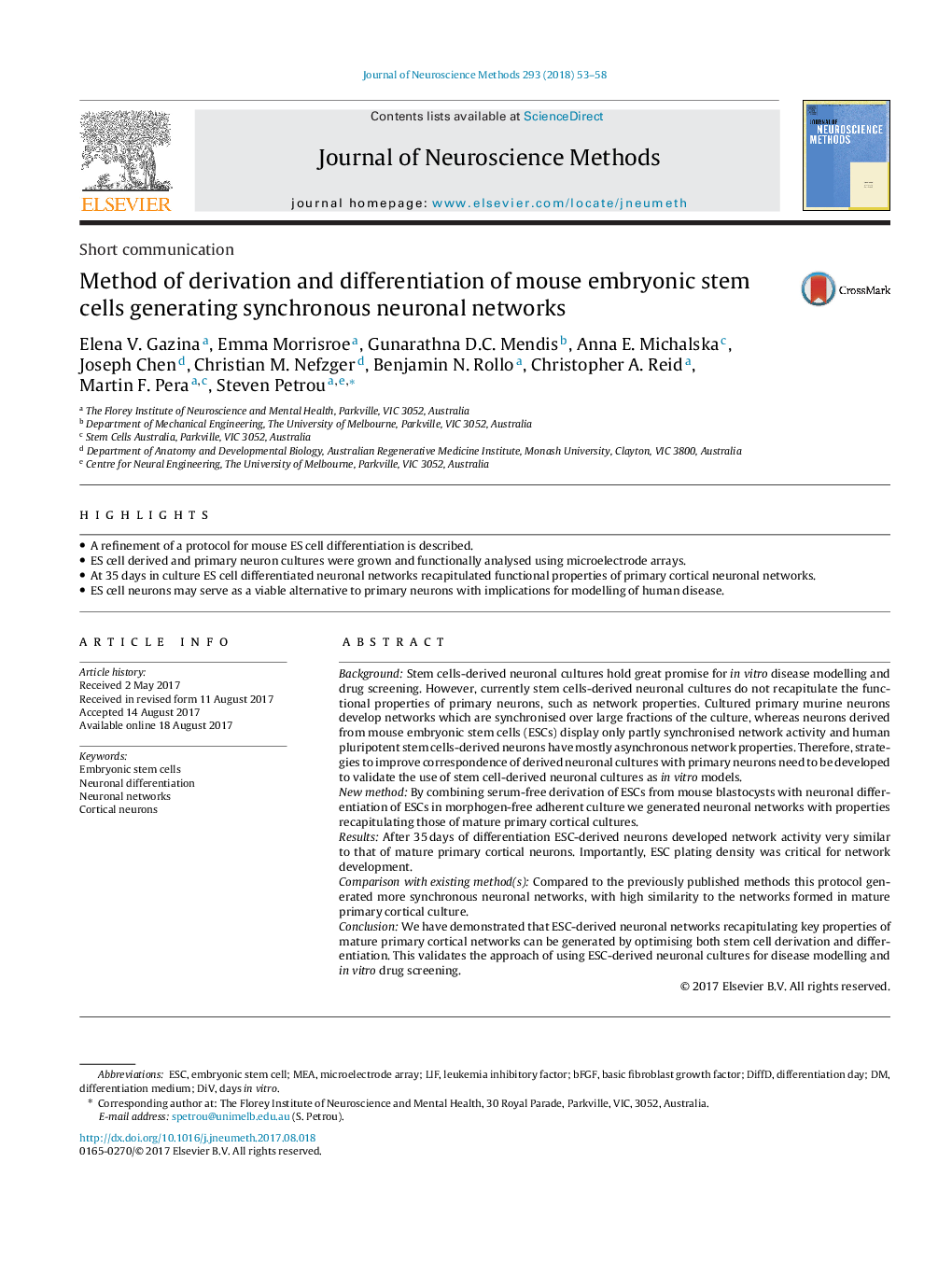| کد مقاله | کد نشریه | سال انتشار | مقاله انگلیسی | نسخه تمام متن |
|---|---|---|---|---|
| 5737099 | 1614576 | 2018 | 6 صفحه PDF | دانلود رایگان |
- A refinement of a protocol for mouse ES cell differentiation is described.
- ES cell derived and primary neuron cultures were grown and functionally analysed using microelectrode arrays.
- At 35 days in culture ES cell differentiated neuronal networks recapitulated functional properties of primary cortical neuronal networks.
- ES cell neurons may serve as a viable alternative to primary neurons with implications for modelling of human disease.
BackgroundStem cells-derived neuronal cultures hold great promise for in vitro disease modelling and drug screening. However, currently stem cells-derived neuronal cultures do not recapitulate the functional properties of primary neurons, such as network properties. Cultured primary murine neurons develop networks which are synchronised over large fractions of the culture, whereas neurons derived from mouse embryonic stem cells (ESCs) display only partly synchronised network activity and human pluripotent stem cells-derived neurons have mostly asynchronous network properties. Therefore, strategies to improve correspondence of derived neuronal cultures with primary neurons need to be developed to validate the use of stem cell-derived neuronal cultures as in vitro models.New methodBy combining serum-free derivation of ESCs from mouse blastocysts with neuronal differentiation of ESCs in morphogen-free adherent culture we generated neuronal networks with properties recapitulating those of mature primary cortical cultures.ResultsAfter 35Â days of differentiation ESC-derived neurons developed network activity very similar to that of mature primary cortical neurons. Importantly, ESC plating density was critical for network development.Comparison with existing method(s)Compared to the previously published methods this protocol generated more synchronous neuronal networks, with high similarity to the networks formed in mature primary cortical culture.ConclusionWe have demonstrated that ESC-derived neuronal networks recapitulating key properties of mature primary cortical networks can be generated by optimising both stem cell derivation and differentiation. This validates the approach of using ESC-derived neuronal cultures for disease modelling and in vitro drug screening.
Journal: Journal of Neuroscience Methods - Volume 293, 1 January 2018, Pages 53-58
